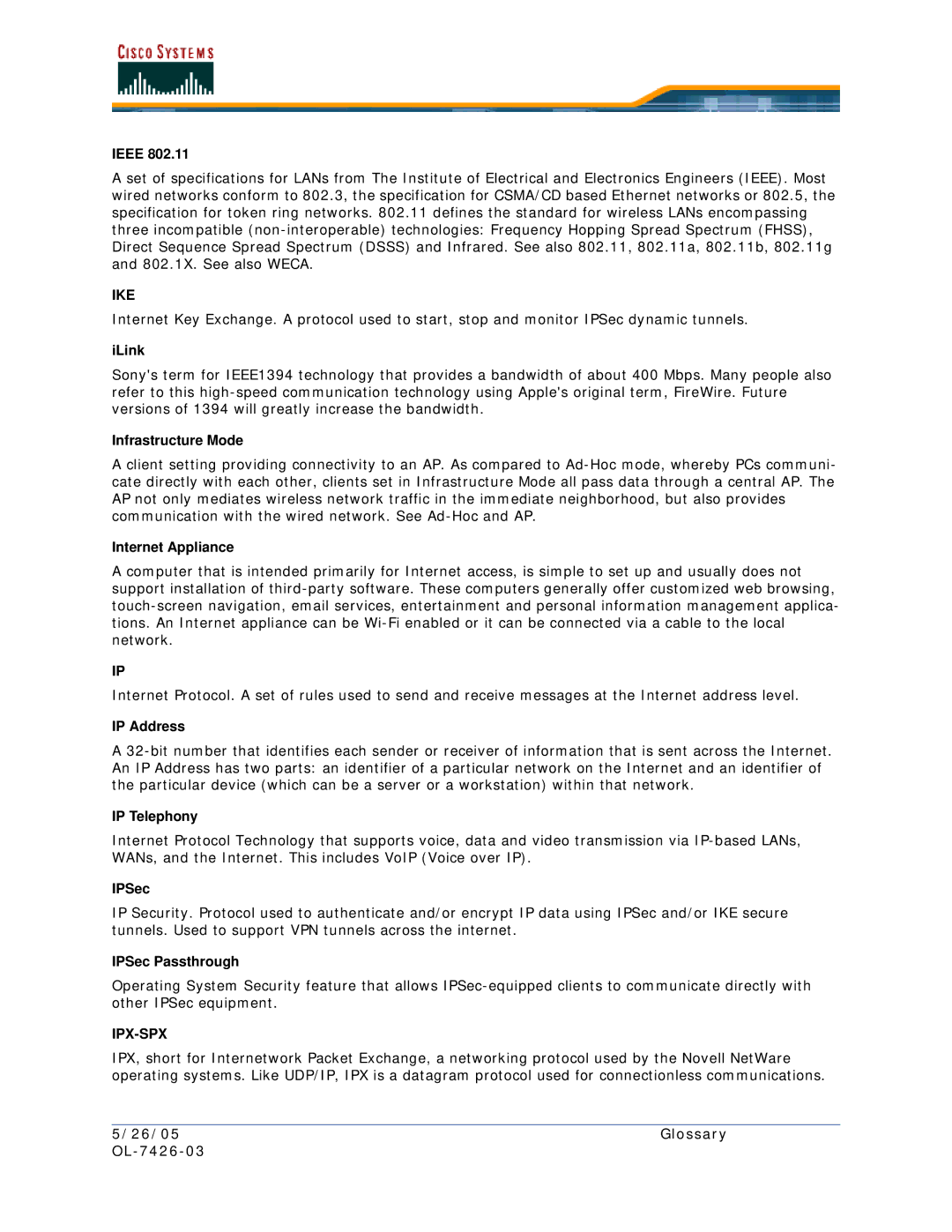
IEEE 802.11
A set of specifications for LANs from The Institute of Electrical and Electronics Engineers (IEEE). Most wired networks conform to 802.3, the specification for CSMA/CD based Ethernet networks or 802.5, the specification for token ring networks. 802.11 defines the standard for wireless LANs encompassing three incompatible
IKE
Internet Key Exchange. A protocol used to start, stop and monitor IPSec dynamic tunnels.
iLink
Sony's term for IEEE1394 technology that provides a bandwidth of about 400 Mbps. Many people also refer to this
Infrastructure Mode
A client setting providing connectivity to an AP. As compared to
Internet Appliance
A computer that is intended primarily for Internet access, is simple to set up and usually does not support installation of
IP
Internet Protocol. A set of rules used to send and receive messages at the Internet address level.
IP Address
A
IP Telephony
Internet Protocol Technology that supports voice, data and video transmission via
IPSec
IP Security. Protocol used to authenticate and/or encrypt IP data using IPSec and/or IKE secure tunnels. Used to support VPN tunnels across the internet.
IPSec Passthrough
Operating System Security feature that allows
IPX-SPX
IPX, short for Internetwork Packet Exchange, a networking protocol used by the Novell NetWare operating systems. Like UDP/IP, IPX is a datagram protocol used for connectionless communications.
5/26/05 | Glossary |
|
